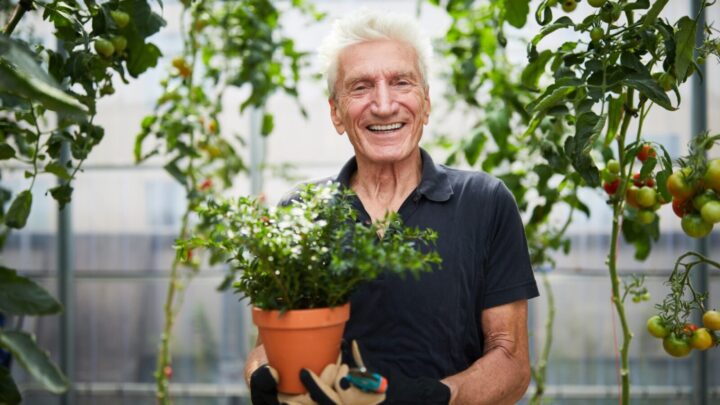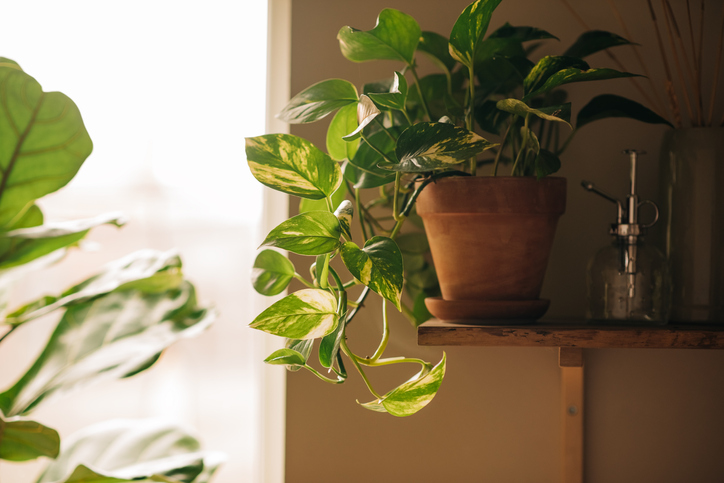
Summer is well and truly upon us, and with it, the blistering heat can take its toll on everyone. But humans aren’t the only ones who can fall victim to our country’s harsh summer conditions, our plants can also suffer through summer if not looked after properly.
Whether it’s an entire outdoor garden or just a few pot plants around the house it’s crucial to give your plants the proper care they need during the warmer months to keep them healthy and alive. Making sure you water your plants at the right time, whether you’re giving them enough shade, or if they’re getting enough sunlight can not always be so straightforward, especially when it comes to varying species of plants.
With that in mind and in an effort to alleviate any concerns around your horticultural endeavours, Starts at 60 spoke to the gardening experts to get the best tips on keeping your plants healthy and thriving.
In addition to simply just watering your plants as the heat makes its presence felt, Director of Perth Landscaping and Gardening, Cindy Randall stressed the importance of mulching to not only “increase soil health overall” but to also ensure “plants retain every possible drop of moisture”.
“Follow your reticulation guidelines and always run your system/hand water early in the morning or after 6 pm. If the sun is up – don’t water as it will increase evaporation so your plants get less water,” Randall said.
“Check where the sun hits now in your outdoor areas and move your pot plants – at least out of the direct middle-of-the-day sun. Give your plants a fertiliser boost as it is now the growing season and will help them be healthier and more resilient.
“Always water before or after the sun for evaporation, but also as water droplets on the leaves can increase the chances of leaf burn if held on plant hairs and exposed to the sun. The most important rule is to pay attention to your plants, they will tell you if they need more water – watch for drooping, wilting and leaf curl.”

Founder of the gardening website Urban Garden Gal, Kelly Martin, explained that “Spring and Summer are when plants are actively growing so they need plenty of nutrients during this time,” therefore she suggested adding a water-soluble fertilizer to your watering can every second week to promote growth and extend the bloom time of your flowering plants.
“Plants need a lot more water during the warmer months, so give your plants a deep watering at least once or twice every week. Check the soil with your finger and if it feels dry it’s time to water,” she said.
“Potted plants dry out faster than plants in the garden, so they’ll need to be watered more often.”
A seaweed solution seems to be the go-to for herb expert and the owner of Mudbrick Herb Cottage, Sandra Nanka when it comes to helping plants navigate the harsh conditions of summer.
“If you have any plants in pots, you can dunk them in a bucket of diluted seaweed solution which acts as a mineral-rich tonic and helps mitigate the effects of external stressors, such as really hot weather conditions. Dunk the pots until the air bubbles stop coming up,” she said.
“For garden beds, apply a deep soak of a diluted seaweed solution to your plants in the early morning hours or late afternoon when the sun is at its lowest.”
Although everyone may be keen to hit the beach and soak up the summer sun at this time of year, your houseplants are a little more sensitive to the elements and may not benefit from over-exposure to direct sunlight. Randall explains that “native or endemic plants will be fine” in the summer sun but that “anything introduced or not native to the area will probably require at least partial shade to prevent burning and drying out”.
“Make sure you check with your local nursery or online to get details on the specific requirements of your plants,” she said.
Martin explained that “most plants grow well with four to six hours of sunlight each day but during the peak of summer you may notice some of your plants wilting, especially during the hot afternoons.”
“To save wilted plants, give them a thorough watering and provide some shade with a shade sail or outdoor umbrella,” Martin suggested.

If you’re looking to adopt a more casual approach to your gardening efforts this summer and don’t want to spend scorching afternoons pacing your balcony, monitoring the health of your pot plants then Randall suggested that “natives are always going to be the best bet if you want plants that thrive and take less care year-round”.
“Endemic plants are a good choice, both for the environment and for less maintenance. Anything that isn’t endemic to your area is usually going to need a bit more help in extreme temperatures,” she said.
“Or, choose plants that are native to climates like yours, for example, Salvas is native to the Mediterranean so love the heat or something from the succulent or cacti families which come from desert areas and do well without much watering. Nowadays people tend to choose what looks good, so there are often plants in every garden that aren’t naturally suited to the area, and will take more care.”
Nanka also adds that “any of your Mediterranean plants such as oregano, thyme, rosemary and sage will be fine in hot weather.”
“Tropical plants will also do well in hotter temps providing they have enough water,” she said.
“It’s the cooler, temperate climate plants or water-hungry ones that aren’t adapted for super high temperatures you really need to be extra protective of.”
Sunflowers, marigolds, coneflowers and salvias were the go-to plant for Martin when it came to summer survival as they “can tolerate heat and full sun, but hostas, bleeding hearts and azaleas will grow better in a spot with the partial shade”.